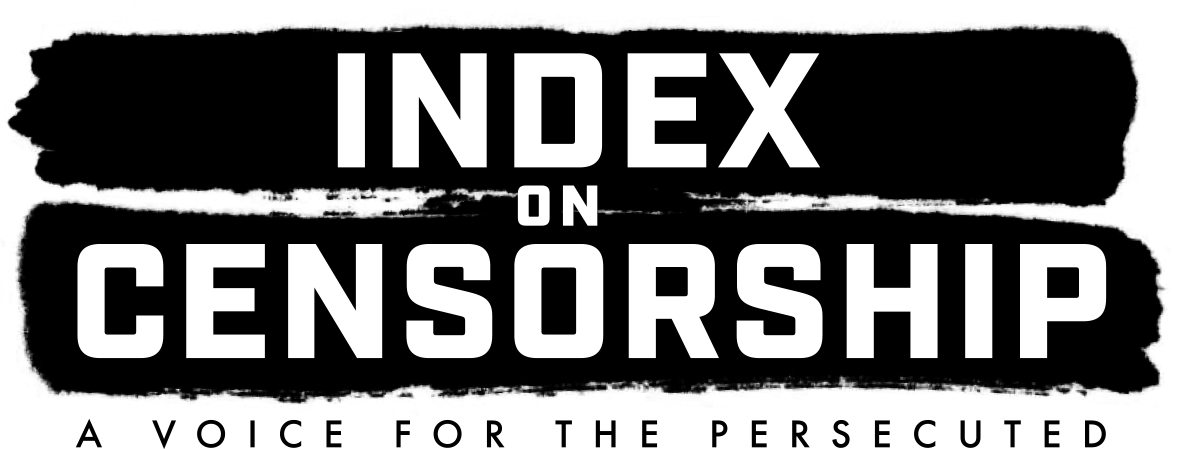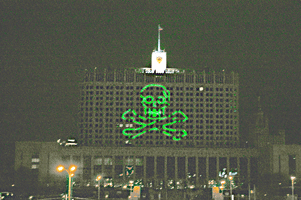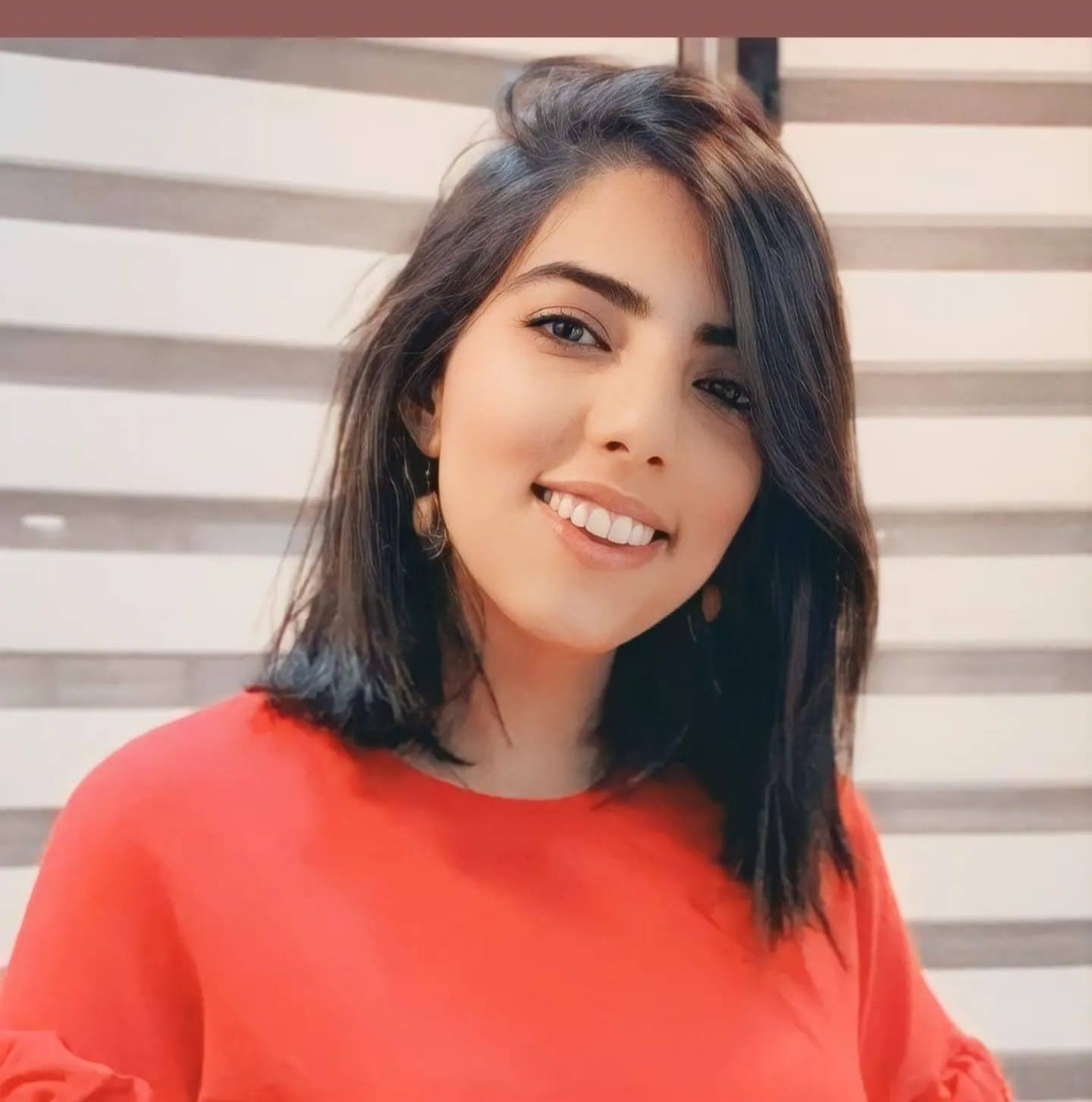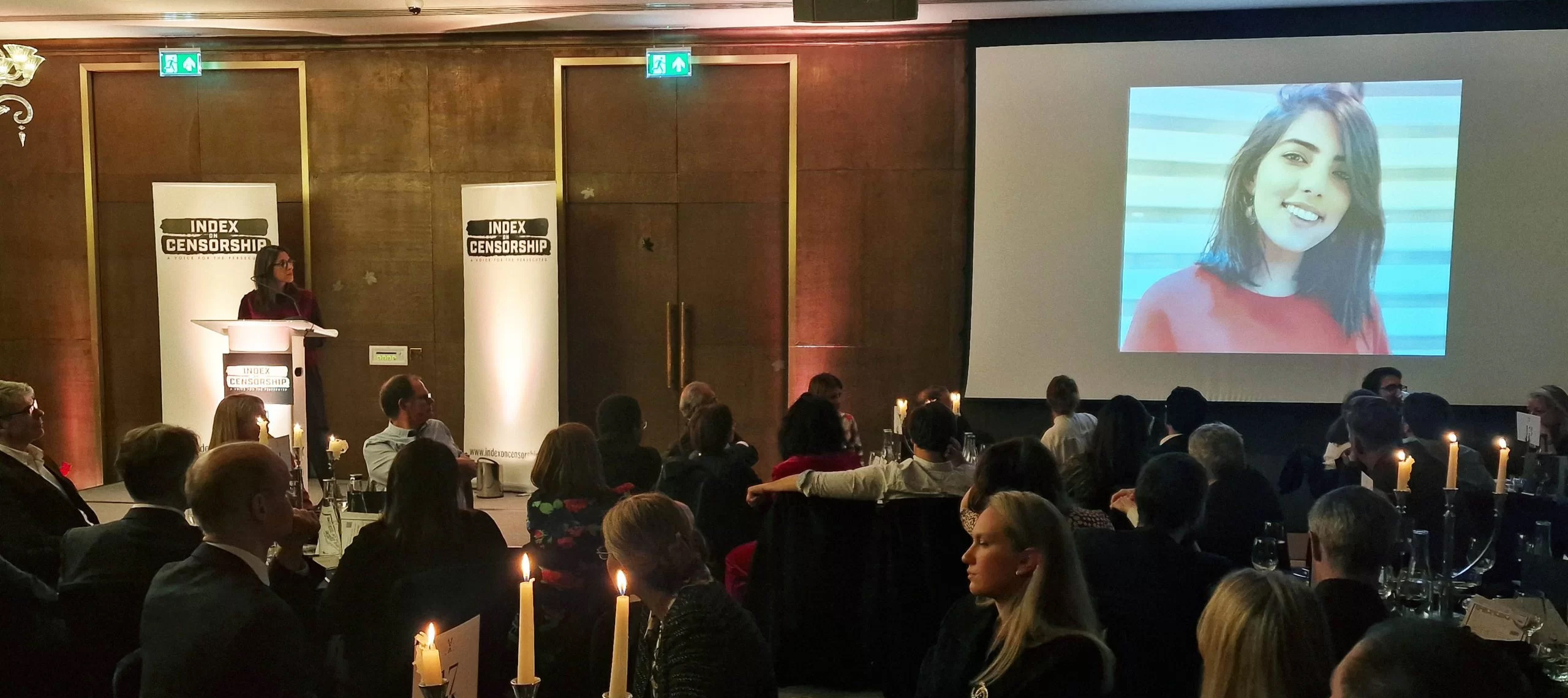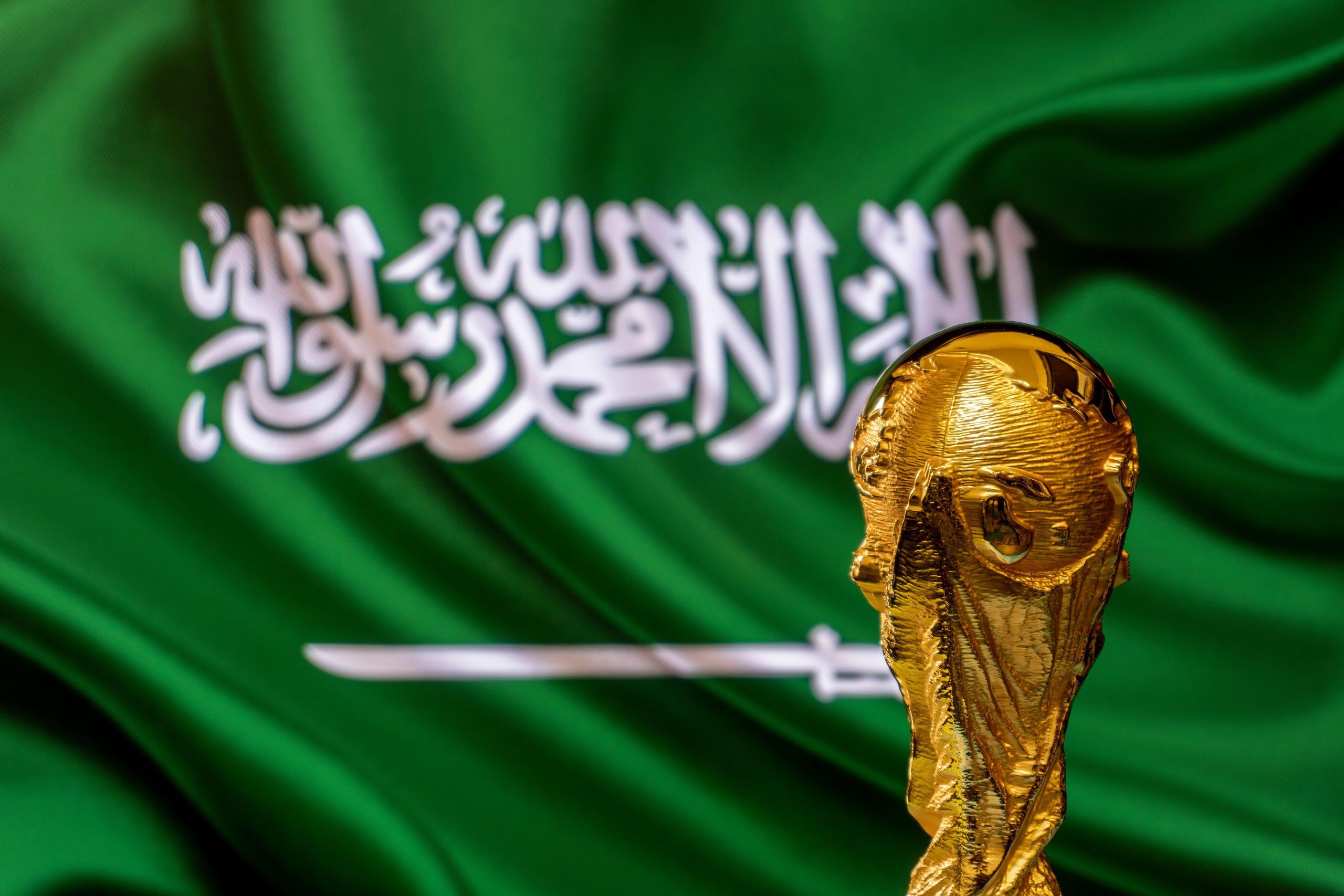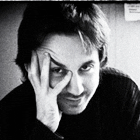 Russian guerrilla artists from the Voina art collective are facing criminal prosecution for their controversial brand of political street art. Nick Sturdee reports on the widespread frustration that has fostered the movement
Russian guerrilla artists from the Voina art collective are facing criminal prosecution for their controversial brand of political street art. Nick Sturdee reports on the widespread frustration that has fostered the movement
Scandal goes down well in the art world, and the organisers of this April’s prestigious state Innovation art award in Moscow clearly decided to make the most of their moment. The queues outside the cavernous Garage Centre for Contemporary Culture — Konstantin Melnikov’s 1927 constructivist bus depot refurbished as a gallery for Dasha Zhukova, Roman Abramovich’s wife, and graced by Amy Winehouse at its opening in 2008 — were to be expected; so of course were the chic crowd and the TV cameras. But the on-stage video installation of revolution in Cairo, Japanese tsunami, and London student riots — accompanied by epic dissonant swells and jabbing chords, lyrics shouted by a male voice choir and an albino’s falsetto solo — was an unmistakable statement. We live in momentous times, Russia is no exception (or hopes not to be) and Russian art is ready for the challenge.
The Innovation jury had resisted attempts by officials and bureaucrats to block the nomination of “Cock held captive by the FSB”, an explosive 2010 action by the street art group Voina (“War”). Two of its performers had only recently been released from jail. Five artists had painted a 60-metre tall phallus on Liteinyi Bridge in St Petersburg just before it was raised to stand erect above the city’s security headquarters — the KGB/FSB building central to Vladimir Putin’s life story — to allow for ships to pass all night long. It was a veritable two fingers up to the security apparatus so pre-eminent and seemingly ubiquitous in Putin’s Russia. 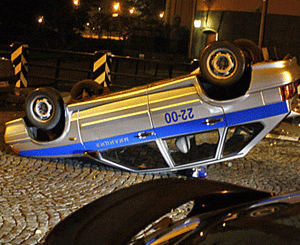
As the Innovation jury head Andrei Erofeev pronounced Voina winner of the visual art category, there was no concealing the triumph on his face. A long-time combatant of art censorship in Russia, his exhibition of banned art had itself been closed and he had been fined. Erofeev had championed Voina. He asked the audience if they dared name the piece by its real name (in the programme the expletive “cock” had been replaced by “member”), and the correct version was duly shouted back in unison by a delighted crowd. The Moscow art world was enjoying a moment of strange carnivalesque liberation, for old-time dissidents and young artists alike. And yet in the fashionable bar afterwards, a group of businessmen denied all knowledge of the group when I asked them to comment on camera and a young gallery owner declined to explain why people might take pleasure in the FSB being insulted. “I have a career to think of,” she said. “Big brother is everywhere.” Evidently what I had witnessed was a battle won, not a war.
WAR ON THE STREET
Voina’s action had been brilliantly planned and executed, it was refreshingly low-tech and delightfully accessible. Over two weeks of clandestine observation, the group calculated they had an average of just 30 seconds between traffic being stopped and Liteinyi Bridge being raised for the night. Over the same two weeks they practised daily with water in a parking lot, dividing the phallus into five “cuts” with one artist responsible for each, and perfecting the assembly of the five cuts into a well-formed and recognisable whole, completed within the 30 seconds. Fifty-five litres of white water-based emulsion paint mixed with water were divided into five-litre canisters, two together for the penis head and testicles in order to achieve the required thickness. Further activists distracted the bridge security in their roles of drunken football fan, nervy woman driver and cyclists. On the night, the group stormed the bridge and completed the phallus in 23 seconds; the only blemish a slightly ill-formed left testicle due to one of the artists being taken out by a security guard. An incredulous crowd wondered and photographed as the bridge towered insolently above the FSB headquarters.
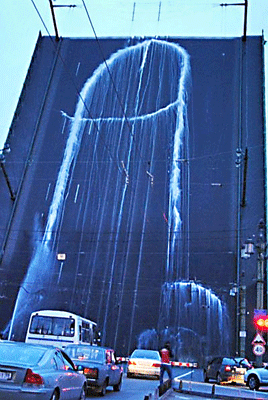 Soon the Voina group followed up their action with another performance, overturning seven empty police cars one September night in St Petersburg. Again, all was meticulously planned and executed with aplomb: five activists overturned each car –– taking an average of nine seconds –– while, when required, others distracted local police by pretending to be foreign tourists needing help. On completion, the group posted a film on YouTube called “Palace Coup” (“coup” in Russian is the same word as “overturn” and “palace” from the same root as “yard”, where the cars were overturned). The video began with a small boy (Kasper, the son of two members of Voina, Oleg Vorotnikov and Natalia Sokol, aka Koza) playing football in a St Petersburg park. The boy kicks the ball out of shot, and in the next shot the ball rolls under a police car parked at night outside a police station. Five figures cross the road and overturn the car, and at the end of the video one of the figures (Leonid Nikolaev) returns the ball to Koza as she holds Kasper in her arms. In case anyone had missed the point, Nikolaev – the third key member of the group – released a statement: “I helped the child – and I will help the country!”
Soon the Voina group followed up their action with another performance, overturning seven empty police cars one September night in St Petersburg. Again, all was meticulously planned and executed with aplomb: five activists overturned each car –– taking an average of nine seconds –– while, when required, others distracted local police by pretending to be foreign tourists needing help. On completion, the group posted a film on YouTube called “Palace Coup” (“coup” in Russian is the same word as “overturn” and “palace” from the same root as “yard”, where the cars were overturned). The video began with a small boy (Kasper, the son of two members of Voina, Oleg Vorotnikov and Natalia Sokol, aka Koza) playing football in a St Petersburg park. The boy kicks the ball out of shot, and in the next shot the ball rolls under a police car parked at night outside a police station. Five figures cross the road and overturn the car, and at the end of the video one of the figures (Leonid Nikolaev) returns the ball to Koza as she holds Kasper in her arms. In case anyone had missed the point, Nikolaev – the third key member of the group – released a statement: “I helped the child – and I will help the country!”
The Palace Coup was the culmination of some four years of relentless political art and actions by Voina designed to challenge the viewer and mock the Russian authorities and law. Oleg Vorotnikov says the aims are still wider: to demonstrate to people that they should not be scared of the authorities. Some performances are political and lifestyle statements that enact plays on words, thus apparently drawing from Russian conceptualist art. “Fuck for the heir the Little Bear!” was an orgy displayed by the group at the Moscow Biological Museum at the end of February 2008, on the eve of Dmitry Medvedev’s election as president, where the election was portrayed as a ritual of copulation in order to greet Putin’s anointed successor, whose name derives from “medved”, Russian for “bear”.
“How to steal a chicken”, in July 2010, showed a Voina activist in a shop doing just that, by concealing it up her vagina (a verb from the Russian slang for vagina means “to steal”). The action demonstrated Voina’s lifestyle principle of not paying for food, thus not recognising, and “fucking”, the “thieving Russian economy and authorities that are destroying the Russian people”.
Other performances have been more straightforward and more directly aimed at the police and other groups charged with upholding law and morality in Russia. In July 2008, Vorotnikov dressed up as an Orthodox priest with a policeman’s hat, entered a supermarket, filled a trolley full of food and left without paying. In November the same year, Voina commemorated the October Revolution by staging “The Storming of the White House”: a huge anarchist skull and crossbones were projected on the national government building, the White House, and scenes from Sergei Eisenstein’s film October were re-enacted by scaling the complex’s towering gates. (In October, it was the Winter Palace that was stormed.) In May 2010, Nikolaev mounted a car belonging to a Kremlin security official with a blue traffic cone on his head to protest at the impunity with which officials are perceived to behave in Russia. (This was during a wider protest movement at bureaucrats’ abuse of privileges by using emergency lanes while the rest of the population had to stand in traffic. The bureaucrats’ cars have blue flashing lights on top.)
While there has been some debate in art circles as to whether their actions constitute art or not, the group see themselves as artists with a social duty. Sitting in a St Petersburg burger joint at midnight while deciding where he, Koza and Kasper would spend the night, Vorotnikov told me that it was his duty as an artist to express openly what other people fear to express, to offend the police and thus protect the people “like Robin Hood”. The words –– expressed with a slight flash of irony in Oleg’s eyes –– replay a time-honoured tradition of Russian intellectuals and artists. He then resumed his social-network planning for the next day on his laptop: Voina is certainly a remixed version of the St Petersburg narrative – and one that has won its place on the international map of street art, or “art terrorists”, as the group’s admirer Banksy put it. And it’s not the only tradition into which Voina inscribe themselves. Sitting in another cafe (the group lead an itinerant lifestyle and keep no mobile phones in order to evade police surveillance), Oleg discussed his time in prison with the veteran political activist and prisoner Maxim Gromov from the National Bolshevik Party. It was almost quaint, a repeat of conversations that must have been held a hundred years ago in similar cafes in the same city, by revolutionaries of a bygone age. It smacked of the Soviet prison legacy: over 80 people in one cell, sharing beds and sleeping in rotation, one hole in the floor for everyone’s needs. Only the details were more modern. Imagine having the bunk next to that, I thought.
The whole Voina lifestyle and narrative are something of a performance; it is about public self-representation, certainly. This is part of what makes them artists, say their supporters. But naturally the police are not to be distracted by such arguments, and when the group overturned the seven police cars, it was decided that it was clearly time for the security forces to play their part. In November 2010, Vorotnikov and Nikolaev were duly arrested in a raid by the Extremism Police – a special police unit active on most towns in Russia – on the flat where they were staying in Moscow. Handcuffed and laid on the floor of a minibus for the ten-hour drive to St Petersburg, Vorotnikov and Nikolaev were then charged with “aggravated hooliganism” and “incitement of hatred of a social group” (the police) and held in a pre-trial detention prison. The pair were freed on bail after three months, following a campaign both in Russia and elsewhere – Banksy raised some £80,000 (US$127,738) to pay for lawyers, bail and to support the group’s further activity. Days later, the Innovation award nominations were announced.
POLITICAL ART ON THE MAP
When Voina made the shortlist for the visual art category of Innovation, it was evidently a major embarrassment for the authorities. After the nomination there followed a treadmill of rumour and behind-the-scenes pressure. First of all it was claimed that the group had not consented to the nomination. Then the entry was excluded on the grounds that documentation was lacking or late. Finally, the Ministry of Culture attempted to bypass the award’s jury and leave the decision to the far more conservative “organisational committee”. When the jury complained, nominated artists threatened to drop out and publicity became too great, the Voina nomination remained. Then pressure on the jury began in order at least to prevent the bridge from winning: it would be fine for the action to win for purely aesthetic reasons, argued officials, but it would be improper for a piece of art to win that appealed to people’s political views.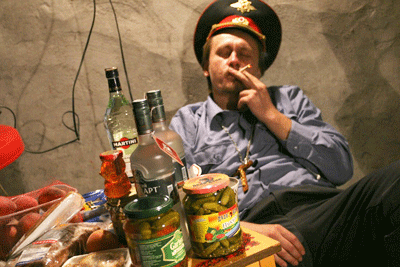
When Voina duly won at Innovation, Russia’s Public Chamber –– a “civil society” body created by the Putin machine –– demanded the award be retracted. The body decried the use of public funds on an award that was a “slap in the face of common sense” and those who saw the “image on the bridge” as “banal hooliganism”. But the horse had clearly bolted – and even the Culture Ministry, itself rebuked by the Chamber for not preventing the result, stated that it would respect the jury’s decision.
The Innovation episode –– trivial though it may seem –– was a crucial battle in the freedom of artistic expression in Russia that most in the art community felt needed to be won. Not everyone liked the Voina action: some artists and critics compared it unfavourably with similar but more ironic performances in the 90s, some saw it as a “symptom” of the mood in Russia rather than something more meaningful, a more accomplished, more “mature” work. Others were uncomfortable with art whose effect derived from political emotion as much as aesthetic response.
Yet in the face of the state’s attempt to interfere with the prize, jury members put aside their aesthetic reservations and awarded Voina the prize. As the critic Ekaterina Degot put it, “It would have been improper not to.” Political expression had thus irreversibly entered the artistic establishment and political art had been defended as a legitimate form of expression. This recognition was also welcomed by those who felt that the flourishing art scene in Russia was beginning to police itself too closely. Some considered that since the 90s big money and strong galleries were threatening to stifle the scope of artistic expression by “academising” what was art and excluding what was not. Political art was needed and was capable of generating immense resonance in a country where contempt for bureaucrats and corrupt officials in all walks of life – not least security – seems to be becoming universal. Commenting on her support for Voina, Degot described how Voina expressed a feeling in society of historic proportion: “The hatred for United Russia [Putin’s party] and for the authorities in general has reached a level comparable only with the hatred for the communists in 1988. That hatred is at boiling point, eating up people inside and – unlike 1988 — it has no constitutional expression. That hatred is Voina, it is a powerful symptom that is impossible to ignore. When they see the bridge, for them it is like looking at an icon … Humiliated, intimidated, and stripped of their rights, citizens look at Voina’s phallus in the internet like a protective icon … Voina is art, and not something else. Voina does not exist in the political sphere — but instead of politics.”
THE BIGGER PICTURE
While Voina has been the most successful — and most controversial — exponent of art “instead of politics”, the group is not alone. Novosibirsk artist Artem Loskutov has for two years organised absurdist street demonstrations called “Monstrations” , where hundreds of participants march with apparently meaningless signs (such as “Yyt”, “Chunga-Changa”, “Why are you so nervous?” and “Tanya, don’t cry!”). The effect is a carnivalesque subversion of politics and plays on the lack of dialogue in the political scene in Russia. Ilya Falkovskii, Aleksei Katalkin and Boris Spiridonov and their music and animation group PG Dreli post playfully menacing videos on the internet — such as young men firing a bazooka at Vladimir Putin’s motorcade — and photographs such as “Somalia is Here” (with armed militants firing on government buildings in Moscow). Grigory Yushchenko exhibited a series of traditional “lubok” pictures of drunken policemen in a Siberian art gallery, while the group “Sinie Nosy” (“Blue Noses”) produces satirical prints, the most famous of which — “The Era of Mercy” — depicts two Russian policeman kissing tenderly in a snow-covered birch forest.
Then there are activists and bloggers whose activity is categorised as politics but whose style and self-representation are not far from those of many of the artists listed — and certainly not far from Innovation laureates Voina. Underground political activity and the internet are saturated with such content. The “revolutionary socialist” DSPA (Petr Alekseev Resistance Movement) — are friends of Voina and have a history of unfurling banners satirising and mocking the St Petersburg and national leadership, often with deliberately childlike word play. The National Bolshevik Party, a kind of postmodern revolutionary party created and led by the writer Eduard Limonov, has aligned and realigned itself with various strands of nationalist and anarchist thought, and is adept at being at the forefront of street protest. The musician Savva Terentyev, who wrote in his much-quoted phrase in his Live Journal blog that one or preferably two policemen should be burned in the central square every day, has become a well-known counter-culture figure. Flash mobs abound, and periodically mass protest groups emerge and form around a single issue — such as hundreds of car owners and YouTube users in the “blue-bucket” campaigns against bureaucrats abusing privilege to use emergency lanes on Moscow’s congested streets.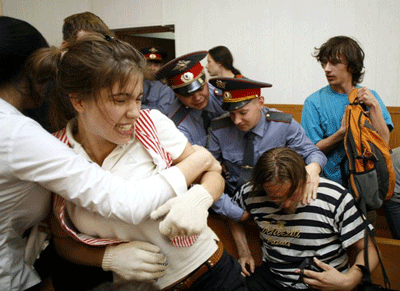
Not only can it be difficult for observers and journalists to define a difference between art and political activism. In recent years artists and activists in the growing political underground in Russia have increasingly been targeted with the same legislation. A raft of laws have been used: most notoriously, two articles in the Russian Criminal Code, 282 and 213, both ostensibly designed to protect society and religious and social groups from “incitement of hatred” and “hooliganism”, have been deployed increasingly often against artists and political activists. This has been facilitated by the importance the Russian executive and legislative authorities have afforded anti-extremist legislation — to which Article 282 is related – that has been developed and bolstered since 2002. Critics complain that the wording of legislation is vague, thus allowing the police and security services to wield the same legislation against Islamist terrorists, neo-Nazi gangs, anarchist groups, bloggers and artists. Other laws, such as “insulting a representative of the authorities” (Article 319), and breaking the “official use of state symbols” (Article 17.10 in the Administrative Code) — in other words, misusing the Russian flag — have also been cited.
An important case occurred in spring 2008, when curators Andrei Erofeev and Yury Samorudov were charged under Article 282 with the incitement of religious enmity for their 2006 exhibitionForbidden Art, which had shown pieces of art that had been recently banned — mostly for their questioning of or mocking stance on religion. Prosecutors sought a three-year prison sentence, but the two men were just fined. Erofeev then lost his job as contemporary art curator at the Tretyakov Gallery. At about the same time, observers began to notice a tendency for the phrase “social group” — which Articles 282 and 213 both list as potential victims of a crime — to be applied to various arms of the state and its security apparatus. The musician and blogger Savva Terentyev was arrested and subsequently given a suspended sentence for “inciting hatred” of the police as a social group in his blog, also under Article 282. In 2009, Artem Loskutov was called in for questioning by the local Extremism Police just before holding the May “Monstrasia”. He was cautioned against conducting the action and, after ignoring the warnings and another invitation to chat, was later stopped by police who he claims planted marijuana on him. At the trial it emerged that the Extremism Police had been wiretapping his phone. In December 2010, he was once again detained, and as a result has now been charged under another law, Article 319 — insulting a representative of the authorities. Allegedly he made offensive remarks to a police officer on duty — on the occasion that he claims the drugs were planted. He was also accused of being offensive in his online account of a night spent in a police cell, in which he caricatured a policeman. The trial started in June. 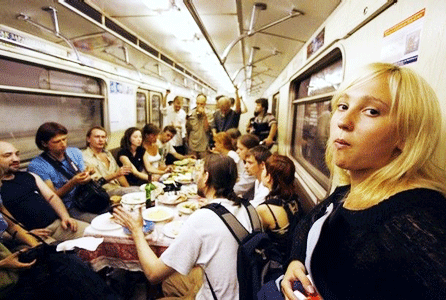
PG Dreli, a politically active group, fell victims to a security forces clear-up in streets near the Kremlin, where they had managed to find a studio. Ironically, it seems that these anti-fascist activists lost their prime location partly as a result of nationalist and racist riots near the Kremlin in December. According to other artists who also lost their studios, the Kremlin security outfit was carrying out a full reconnaissance of the area in the wake of the violence. When they entered PG Dreli’s studio, they were shocked to discover artwork such as a series of photographs of guerrillas taking pot-shots with bazookas at key buildings in Moscow (including the FSB headquarters, the Lubyanka).The security personnel are also reported to have seen “Vampire”, a video the group made depicting a man plotting to attack Putin’s motorcade as he stood, bazooka in hand, next to the very window from which the studio looked onto the Kremlin. One imagines the Kremlin security outfit found it hard to appreciate the art they were beholding. The property developer owning the building was instructed to remove PG Dreli from the studio (he also evicted the other artists from their studios for good measure). Security guards met one of the suspected artists, Ilya Falkovsky, as he arrived to clear his stuff out. During the course of a long nocturnal discussion, agents allegedly threatened Falkovsky with violence and to plant drugs or weapons on him in order to ensure a lengthy jail sentence; they also asked whether he would like to act as an informer on “extremists” he knew. Falkovsky left the country for – of all places – China (where his wife is from).
This bizarre story illustrates the deeply problematic gulf between artists and Russia’s security services. Naturally, where anti-extremism police may fear real action, Russia’s political artists’ work is symbolic. For critics like Ekaterina Degot, this is proof that the artists are actors of the aesthetic rather than political sphere. And yet, in an atmosphere of increasing radicalisation and alienation among young people in Russia, the concerns and action of the authorities may even make their fears closer to reality. As I sat with Voina in a St Petersburg burger bar, they were discussing their lives since their release. The prison experience, continued attention from the Extremism Police (who seem to survey the group), and the threat of real prison sentences following criminal charges, leave decreasing time for art performance. They are spending considerable time, and the money they have received from Banksy and from the Innovation award, on their legal struggle and on supporting others they see as facing persecution from the authorities. As Oleg Vorotnikov says, “Banksy is bankrolling the next Russian revolution – and I think he’d be pleased.”
The group see themselves as artists –– but Oleg says that for him the ethical is ultimately more important than the aesthetic. We watch a video of a recent political demonstration in which they participated, and it is striking that their activity appears to be moving closer to pure direct action. The video shows the members preparing bottles of urine before the demonstration –– in case of a confrontation with the police. When they are prevented from blocking a road, and Leonid Nikolaev is targeted and dragged away by the police, they spray the police with the urine they have prepared. Oleg’s explanation of the event concentrates on the symbolic: the urine is physically harmless, but according to the prison subculture in which the police and much of Russian society are steeped, the police have been deeply and profoundly humiliated. I’m not sure this is so specific to Russia and to its criminal lore, but there is no doubt that the event is far stronger, and indeed more interesting and more capable of generating meaning, as symbolic art –– rather than as a potentially fringe and slightly pitiful political act.
The incident only added to Voina’s problems. In July, a court ordered Vorotnikov’s arrest for failing to obey bail terms. In addition to the original charge under Article 213 (hooliganism and incitement of hatred against a social group), he also faces charges under Articles 318 (using violence against a representative of the authorities) and 319 (insulting a representative of the authorities). Now officially a wanted man, he is currently in hiding. The group also say they are concerned by threats that have been made by members of the Extremism Police over the right to custody of their child, Kasper.
Voina are now apparently staying in a basement with no running water and say that the demonstration was not one of their performances. Indeed, it seems they have not been able to enact one since their release from jail. But now they appear to be preparing for something new. “We have been preparing a very powerful and daring plan for two months now”, they write. “It will be a wonder-action. We have little strength, we are cornered by the police on all sides, but our ambitions are beast-like. The result will be something very joyful and very frightening! But very harmonious.” It will be interesting to see what this extraordinary group comes up with. Russian political street art is certainly on the move, and the parliamentary and presidential elections over the next six months might well provide a good stage.
Nick Sturdee is a filmmaker, producer and writer. His films include Stolen Brides and Chechnya’s Missing Women. He is currently making a film about Voina
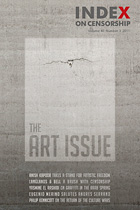
This article appears in the new edition of Index on Censorship. Click on
The Art Issue for subscription options and more
